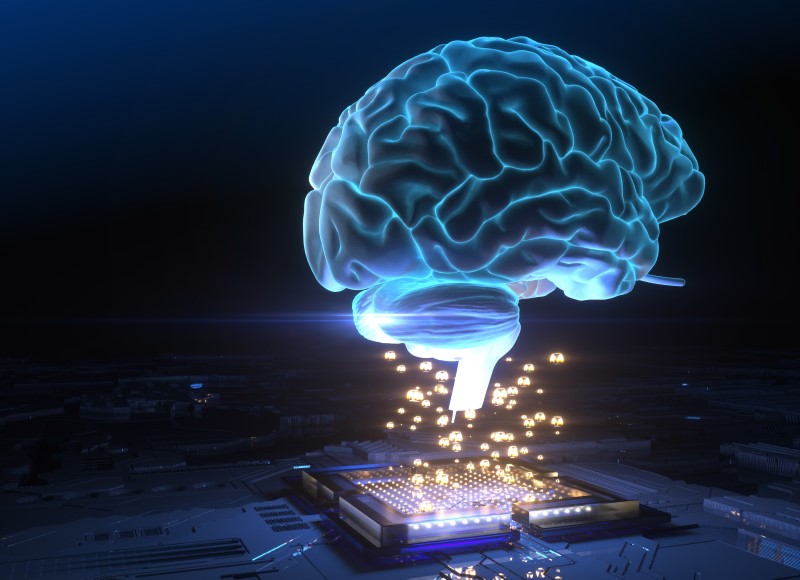As we prepare to co-exist with artificial intelligence, what does it mean for intelligent machines to be able to read human brain activity with surgically implanted electrodes that monitor neurons?
Introduction
Intelligent machines are on their way to reading human brain activity (i.e. the mind), as surgically implanted electrodes will be able to monitor neurons. While there are still many obstacles for the scientific and entrepreneurial community to overcome before they can successfully use brain science advances such as implants for human brain enhancement and repair, advances have already begun to happen in many forms and shapes. Examples include the news emerging about Elon Musk’s brain-computer interfaces progress and many other neurohacking initiatives.
With the recent announcement of Elon Musk’s Neuralink initiative, there is a hope that understanding brain circuits, neural pathways, and wiring (i.e. mapping the brain) will let us understand the command center for the human nervous system better. Also, it will allow us into the human mind through neural implants that work as sensors, leading to other ways to achieve human enhancement potential.
As billions of dollars are being spent to map the human brain and develop enhancement capabilities, it brings us to an important question: in an age of neurohacking, neurohackers, and neuroscience, what does it mean to have progress and development in initiatives like Neuralink?
Neurotechnology: Neuralink to Neurohacking
It seems the human brain repair or enhancement can be done in many ways. It can be done via drugs (both legal and illegal), dietary supplements, food, drinks, binaural beats, and brain-computer interface technologies like Neuralink. As we witness the rapid growth of ideas, innovations, and inventions that focuses on nootropics (smart drugs, supplements, and techniques to enhance human intelligence and conscience or repair and enhance cognitive ability), many advances are already happening. Moreover, as many advances in direct-to-consumer EEG products are also emerging on mind-control applications, the majority seems to be geared toward brain optimization and wellness.
With the increasing availability of brain-enhancing drugs and supplements, there is a rise in the commercialization of neuroscience tools that have set the foundation for the emergence of do-it-yourself (DIY), the democratization of science, and direct-to-consumer brain stimulation. That brings us an important question: what is the ultimate goal for the neurohacking movement? Is it brain repair and enhancement or mind control and surveillance?
Decentralization of Neuroscience and Technology
Irrespective of personal or commercial, as we hear about the advances in neuroscience, neurohacking, and brain-computer interface, the freedom to explore human biology, the human brain, human life, and its ecosystem seem to be a beautiful, welcoming thing on the surface. Along with the democratization of information, new tools, and technology, biohacking, neurohacking, and lifehacking— the emerging decentralized, do-it-yourself self-biology, brain stimulation, repair, and enhancement movement bring nations an excellent potential for solving the complex problems facing humanity.
This is especially promising in a time when we are no longer confined to what nature has to offer, and we prepare to coexist with artificial intelligence. The time is almost here, where the ability to enhance knowledge, information, and intelligence seems restricted only by imagination as we will now be able to not only manipulate existing human neural pathways but also insert Neuralink, neural chips to repair and enhance the brain.
So, as we take a step forward towards the decentralization of Biology, it is vital to understand and evaluate where this neurohacking trend is taking us. Since decentralization of science has been considered a milestone in the democratization of destruction and is becoming a force for evil (as well as good) in the world, the very idea of broadening participation in human biology and brain research and application development brings us critical security risks facing humanity. That brings us an important question: how to describe today’s personal (do it yourself) or commercial neurohacking and brain stimulation movement?
While understanding of the brain is fundamental to advance human intelligence and conscience, it is also crucial to understand the associated security challenges we will likely face.
Security Concerns
That brings us to an important question: how many companies are developing neurotechnologies like Neuralink, and how many individuals and groups are developing neurohacking tools? While there are inherently ethical and security concerns of brain stimulation, repair, and enhancement, there are also concerns about complications that may arise when such tools are commercialized and sold to others. In the absence of clear laws to regulate neurotechnologies, it is not clear who is accountable for its safe use and practices. As a growing number of neuro hackers’ self-experiment, there are growing concerns about vulnerable users with no knowledge or skills being harmed through such self-experimentation. Under those circumstances, who is liable? Who is ethically responsible? What are the risks?
It is, therefore, essential to understand and evaluate:
- How can we effectively monitor emerging neurotechnology development?
- What are the risks associated with neurotechnologies?
- Who is accountable for the neurohacking risks?
- Who would control this technology?
- Would everyone have access?
- How safe is it?
- How affordable is it?
- How will nations regulate the entire ecosystem of neurohacking and mind enhancement products?
- What happens when hackers get control of the interface?
- How will we manage the security risks emerging from these advances?
- For the would-be upgraded human, what is next?
As these advances raise essential ethical and security issues, it brings us to another question: do we have adequate security tools to prevent mind control and surveillance?
What Next?
Security is a shifting target as any progress in science and technology poses potential dual-use security risks. There is no doubt that neurotechnology-triggered brain modification makes sense if it helps cure diseases and enhance human capabilities. However, the security risks and possible mind control and surveillance complications would perhaps question the rewards.
NEVER MISS ANY OF DR. PANDYA’S POSTS
Just join here for a regular update





 Personal Preparedness
Personal Preparedness